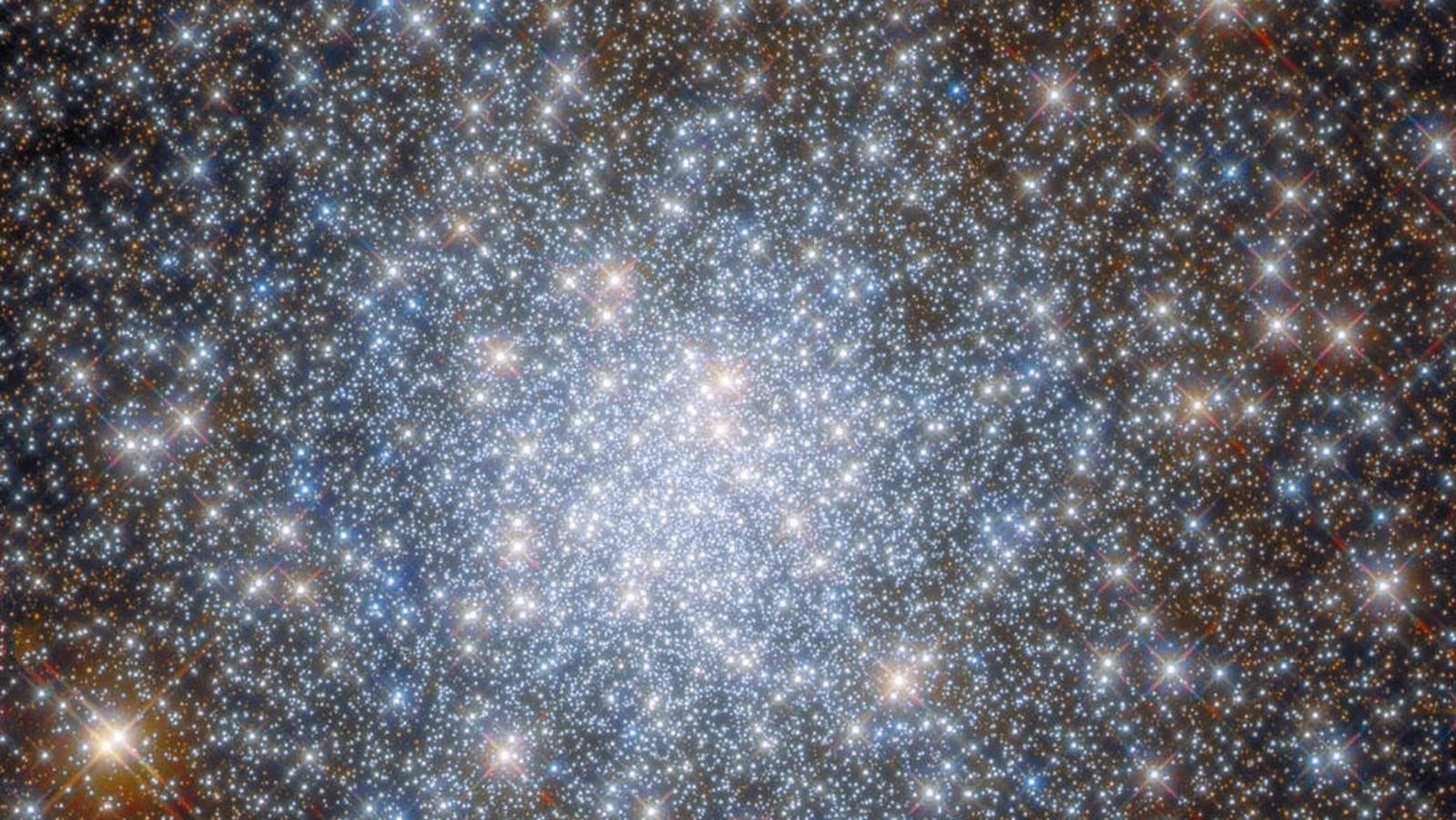Hubble Space Telescope image shows an amazing spherical star group glued by gravity
Here is how a roughly spherical group of stars held together by gravity captured by Hubble Space Telescope looks like.

Have you seen an almost spherical group of stars held together by gravity? NASA Hubble Space Telescope has captured one such image. NASA has shared this Hubble Telescope image over its official Twitter handle and has informed that it is of NGC 6638, a globular cluster- a roughly spherical group of stars held together by gravity. "This image shows NGC 6638, which is a globular cluster – a roughly spherical group of stars held together by gravity. Hubble studies what kind of stars make up globular clusters, how they evolve, and more," the tweet read.
A star-studded #HubbleFriday awaits! ⭐
— Hubble (@NASAHubble) August 5, 2022
This image shows NGC 6638, which is a globular cluster – a roughly spherical group of stars held together by gravity.
Hubble studies what kind of stars make up globular clusters, how they evolve, and more: https://t.co/wEUjBWIW2L pic.twitter.com/V2tuhg3cL5
According to the information provided by NASA, the image shows the heart of the globular cluster NGC 6638 in the constellation Sagittarius. "The star-strewn observation highlights the density of stars at the heart of globular clusters, which are stable, tightly bound groups of tens of thousands to millions of stars," NASA said in a report.
Also Read: Forget asteroids, comets, solar storms, NASA is EXCITED about this
It can be known that to capture the data in this image, Hubble used two of its cutting-edge astronomical instruments: Wide Field Camera 3 and the Advanced Camera for Surveys. Hubble has revolutionized the study of globular clusters. The distortion caused by Earth's atmosphere makes it nearly impossible to clearly distinguish stars in the cores of globular clusters with ground-based telescopes.
"Orbiting some 340 miles (550 km) above Earth, Hubble can study what kind of stars make up globular clusters, how they evolve, and the role of gravity in these dense systems without Earth's atmosphere posing a problem," the research organisation said.
Also Read: Can near-Earth object be DANGEROUS? Here is how NASA wants to stop scary comets, asteroids
The NASA/ESA/CSA James Webb Space Telescope will further help in enhancing understanding of globular clusters by peering into their star-studded interiors. Webb observes at infrared wavelengths, providing unique information about cluster stars that will complement Hubble's views.
It can be known that the Hubble Space Telescope was launched into orbit by space shuttle Discovery on April 24, 1990. Hubble orbits about 547 kilometers (340 miles) above Earth and is solar-powered. The telescope takes sharp pictures of objects in the sky such as planets, stars and galaxies.
Also, Hubble has made more than one million observations. These include detailed pictures of the birth and death of stars, galaxies billions of light years away, and comet pieces crashing into Jupiter's atmosphere.
Catch all the Latest Tech News, Mobile News, Laptop News, Gaming news, Wearables News , How To News, also keep up with us on Whatsapp channel,Twitter, Facebook, Google News, and Instagram. For our latest videos, subscribe to our YouTube channel.





























